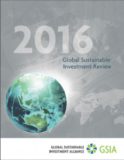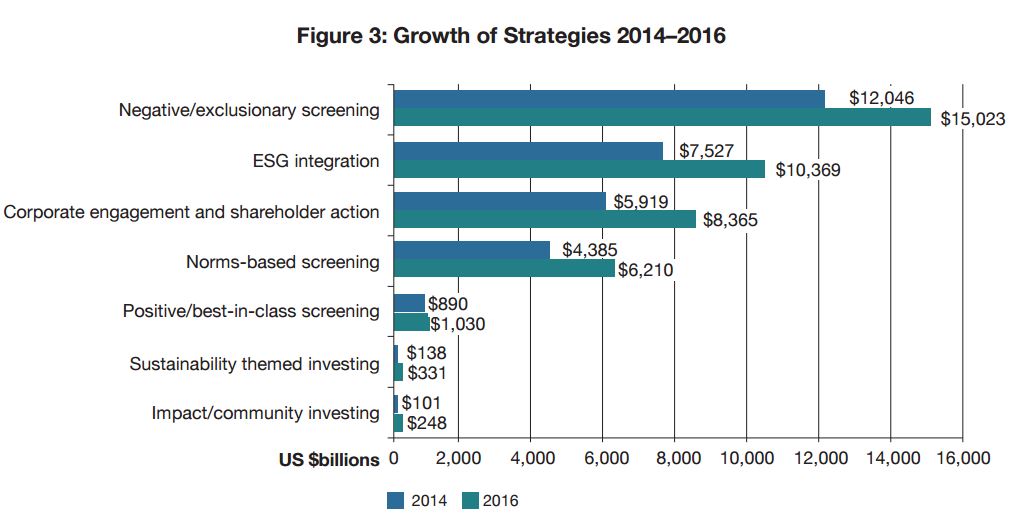
Bron
GSI Alliance
Today the Global Sustainable Investment Alliance (GSIA) released its biennial Global Sustainable Investment Review 2016, showing that global sustainable investment assets reached $22.89 trillion at the start of 2016, a 25% increase from 2014.
The Global Sustainable Investment Review brings together the results from regional market studies by the sustainable investment forums from Europe, the United States, Canada, and Australia and New Zealand. Market information on Japan was provided by JSIF—Japan Sustainable Investment Forum; data on Asia ex Japan was provided by the Principles for Responsible Investment.
In nearly every market represented in the report, sustainable investing grew in both absolute and relative terms since the beginning of 2014. Europe accounts for over half the global SRI assets (53%), and the United States for 38%. The fastest growing region is Japan—due in part to an expanded survey that provided information for the first time on the sustainable investing activities of numerous institutional asset owners—followed by Australia/New Zealand.
The largest sustainable investment strategy globally is negative/exclusionary screening ($15.02 trillion), followed by ESG integration ($10.37 trillion) and corporate engagement/shareholder action ($8.37 trillion). Negative screening is the largest strategy in Europe, while ESG integration leads in the United States, Canada, Australia/New Zealand and Asia ex Japan. Japan’s primary sustainable investment strategy is corporate engagement and shareholder action. The fastest growing strategy, although also the smallest in absolute dollar terms, was impact/community investing.
Several GSIA members reported that the consideration of fiduciary duty was an important driver for sustainable investing, along with client demand.
While institutional investors still dominate the SRI market, with pension funds often comprising the largest percentage of institutional SRI assets, interest by retail investors is growing. The relative proportion of retail SRI investments in Canada, Europe and the United States increased from 13% in 2014 to 26% at the start of 2016. Over a third of SRI assets in the United States were retail.
Growing global concern over climate change has resulted in rising interest in green finance, including climate-aligned bonds. In fact, the growing interest in green bonds over the last two years has shifted the average SRI asset allocation. In 2016 in Canada and Europe, most SRI assets were in bonds (64%) followed by equities (33%). This is a flip from 2014 when 50% of assets were in equities and only 40% in bonds. China is another important contributor to the rise in green bonds as China is now the world’s largest issuer of climate-aligned bonds, with $220 billion in issuances according to the Climate Bonds Initiative.





